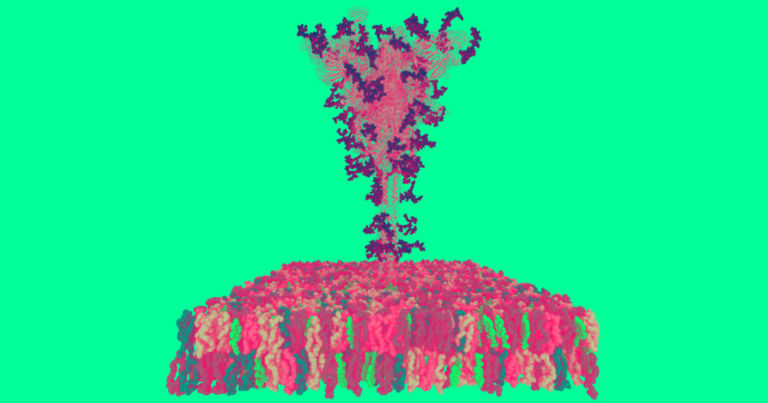If you could squint hard enough to see the microscopic world, you would notice that the coronavirus SARS-CoV-2 is absolutely coated in tiny little spikes. These spikes, each one a protein that can stick and bind itself to a host cell, are key to the coronavirus’s unique infectiousness.
But now, scientists from Lehigh University, Seoul National University, and the University of Cambridge have managed to map out every single atom in those spikes — a valuable step in the quest to render them useless.
Their model, described in research published Friday in The Journal of Physical Chemistry, was made totally open-source with the hope that other medical researchers can use it to develop new treatments or preventative measures against COVID-19. In an accompanying video — which is geared toward researchers, but has some cool images — the scientists explain exactly how they developed the model, and how others might use it as a tool.
“Our team spent days and nights to build these models very carefully from the known [Cryogenic Electron Microscopy] structure portions,” Lehigh bioengineer Wonpil Im said in a press release. “Modeling was very challenging because there were many regions where simple modeling failed to provide high-quality models.”
Basically, the team needed to fill a whole lot of gaps in our understanding of the coronavirus to come up with their model.
But now that it’s ready, the researchers suggest it could be used to develop vaccines or drugs that specifically target the coronavirus on the atomic level, potentially making it a far more effective treatment.



